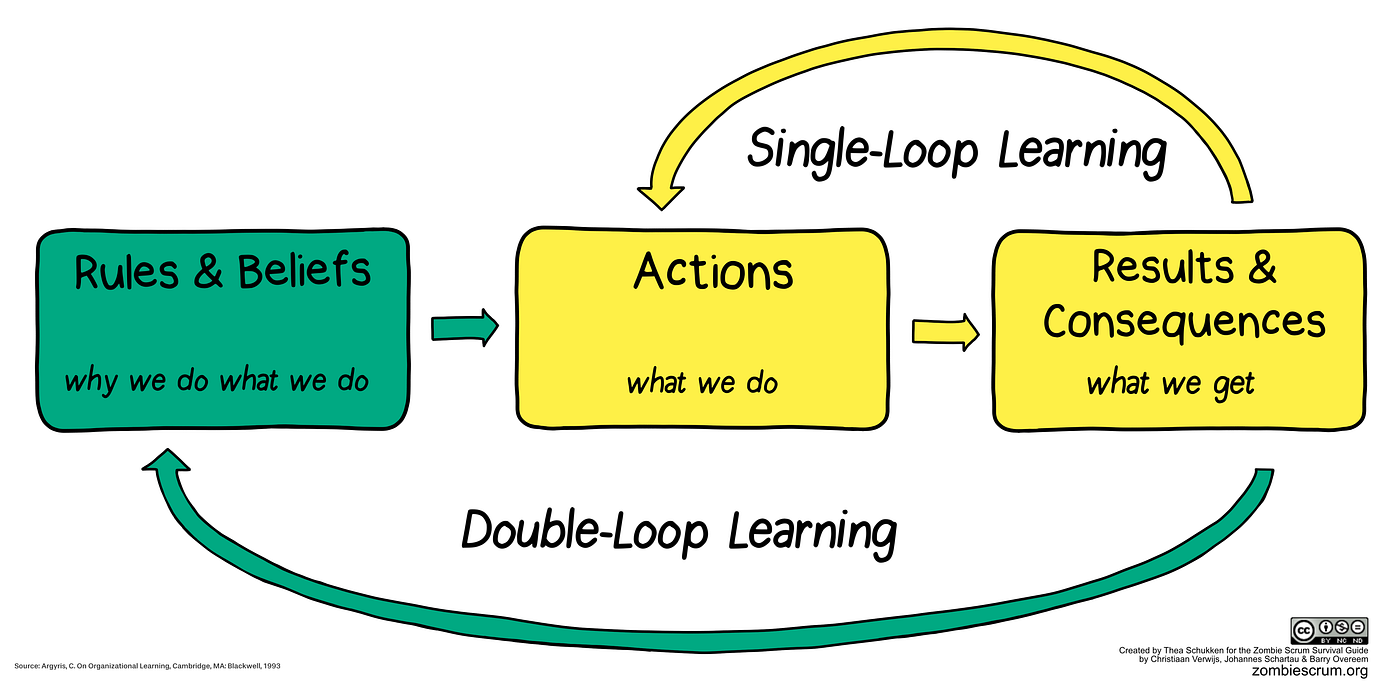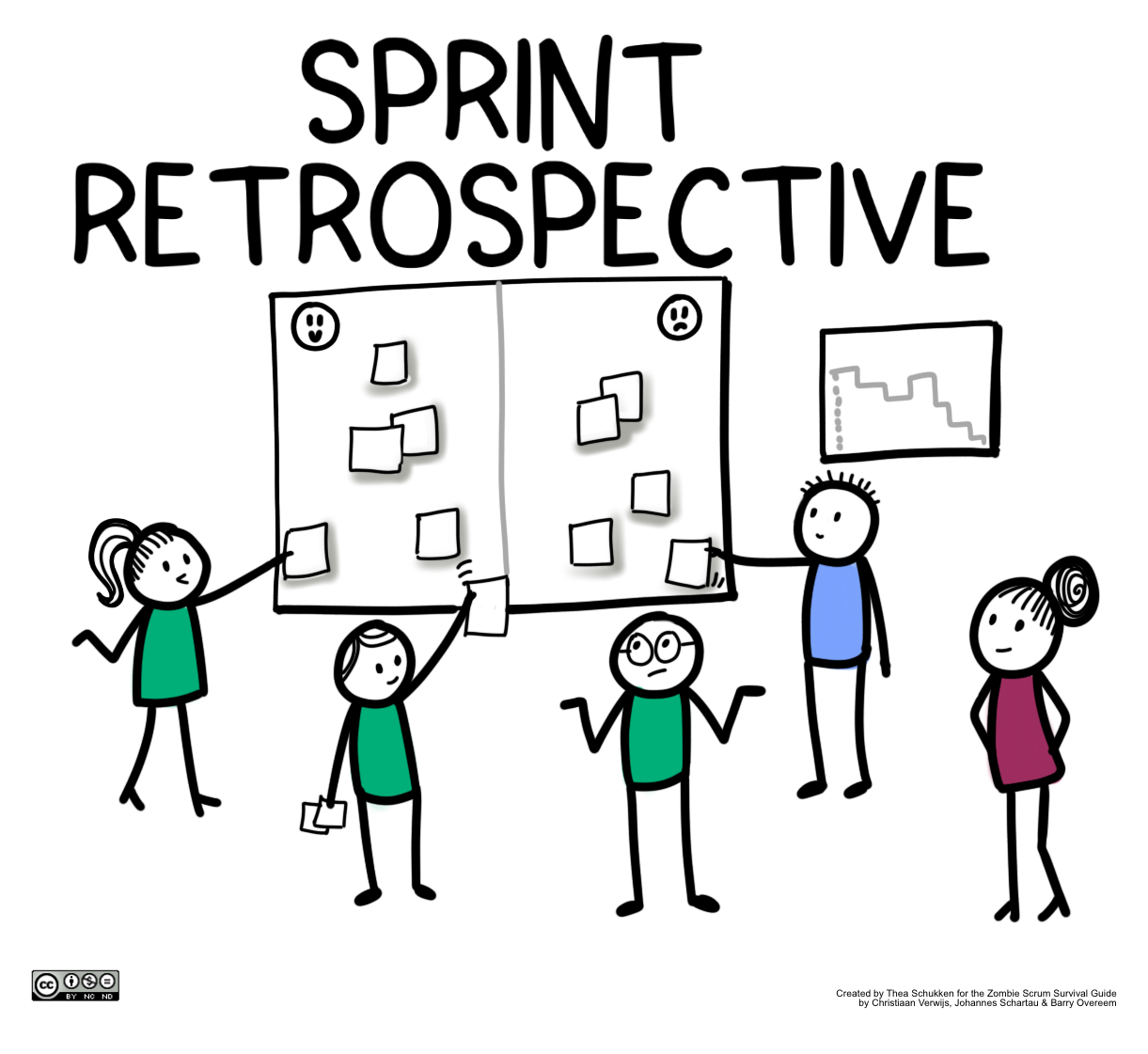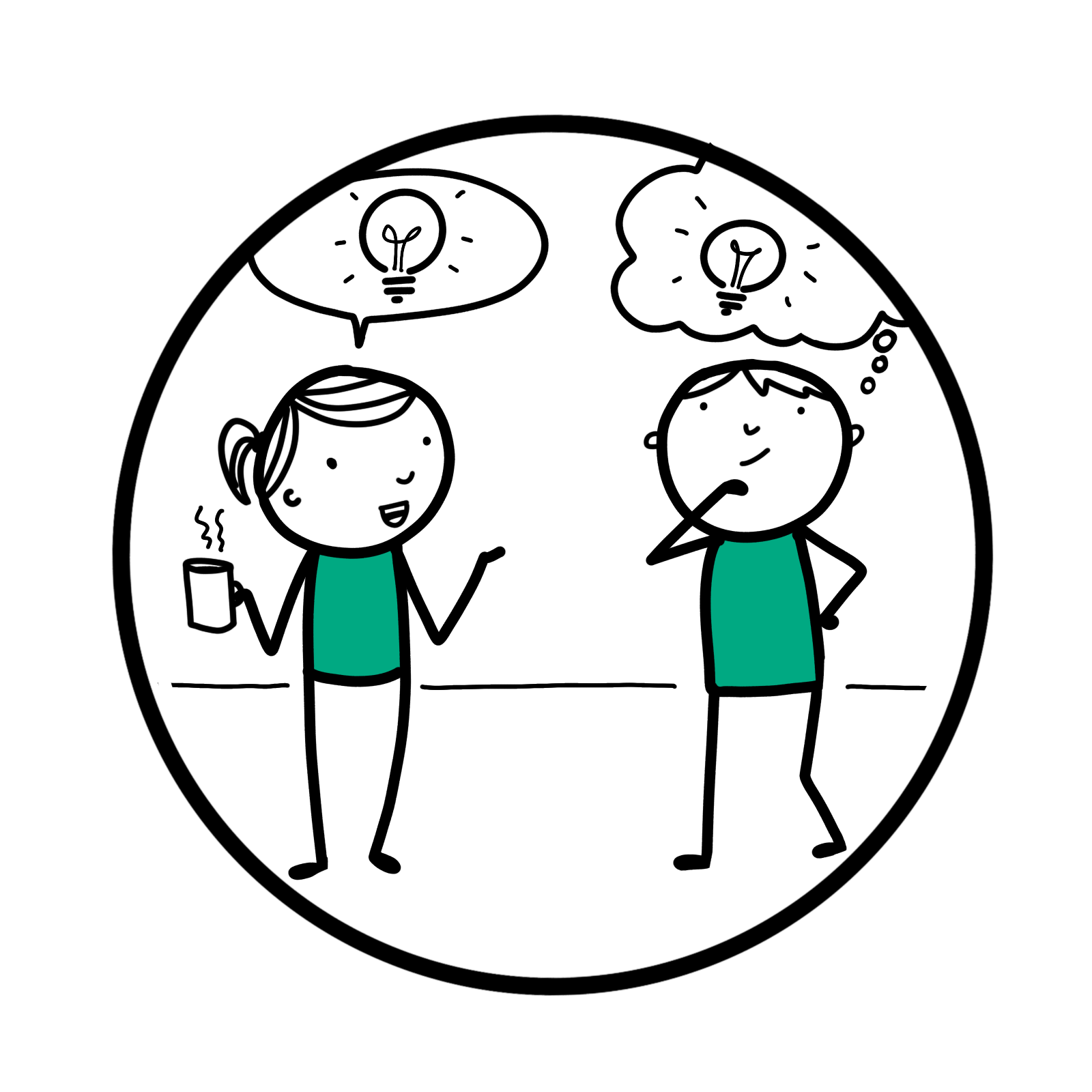
Where in the Scrum framework do reflection and learning happen? You’re only partially right if your answer is the Sprint Retrospective. Because although learning should certainly happen there, it’s a waste of opportunities to do it *only* during Sprint Retrospectives, Sprint Reviews, or one of the other Scrum events. There are many ways to encourage learning throughout the Sprint in a way that makes it a natural part of your work together.
With this blog post, we offer you a collection of powerful questions to help your team reflect, learn and improve, continuously. We also described specific opportunities for when & how to use them. Not as facilitated retrospective formats, but as learning moments that can take place anywhere, anytime during the Sprint.
Similar to backlog refinement, learning shouldn’t be a Scrum event, but an ongoing activity. Give these questions a try, and let us know what conversation it sparked!
An extensive edition of this article is available as a free download on our webshop. It’s nicely styled and contains many more powerful questions. You can download the PDF here.
Improve How You Learn As A Team
Teams and organizations are not always aware of how learning takes place. In our book the Zombie Scrum Survival Guide, we included the concept of single- and double-loop learning. It’s based on the book On Organizational Learning by Chris Argyris.

Single- And Double-Loop Learning
Single-loop learning focuses on solving a problem within an existing system that is defined by sets of beliefs, structures, roles, procedures, and norms. Double-loop learning challenges the system itself. As an example of single-loop learning, a Scrum team might explore different techniques for estimating their Product Backlog for the purpose of forecasting. The Scrum team might also use double-loop learning to challenge the purpose of forecasting itself and look for other ways to satisfy the need to forecast. Another example of single-loop learning is when developers try to fix broken unit tests faster, whereas double-loop learning would see them question why their unit tests are so prone to breaking in the first place. A final example of single-loop learning is when a Product Owner tries to better capture requirements on the Product Backlog, whereas double-loop learning might make her question the need for detailed requirements in an empirical process in the first place.
So where single-loop learning improves what is possible within the current system, double-loop learning is about challenging and changing the system. Double-loop learning helps people change (sometimes deeply held) assumptions and beliefs.
“Where single-loop learning improves what is possible within the current system, double-loop learning is about challenging and changing the system.”
The Sprint Retrospective
Fortunately, using the Scrum framework purposefully helps teams leverage both types of learning by creating transparency around how work is done, and by creating opportunities for inspection and adaptation. Although all Scrum events help teams to learn by inspecting and adapting, the Sprint Retrospective is the one that most directly reflects on how work is done. The benefits of this reflection are limited when it focuses only on finding new practices and techniques (single-loop) and doesn’t involve challenging underlying beliefs and rules (double-loop).
Teams affected by Zombie Scrum tend to limit themselves to single-loop learning and can’t benefit from double-loop learning because their existing beliefs about management, products, how to manage people, and how to control risk remain unchallenged.
If your Sprint Retrospectives remain shallow and only engage your team in single-loop learning, your situation won’t improve. We’ve found it helpful to frequently reflect with teams on *how* they learn. That may sound super abstract, but you’ll discover one way to do this with this experiment. This kind of learning makes it more likely for teams to engage in double-loop learning (or even beyond).

If your Sprint Retrospectives remain shallow and only engage your team in single-loop learning, your situation won’t improve.
Don’t Limit Learning To The Sprint Retrospective
While the Sprint Retrospective is an excellent opportunity to reflect and learn, we want to encourage you to use the entire Sprint to consciously learn and improve. Consider the Sprint Retrospective the minimum moment to inspect how the team is doing in regards to relationships, and processes. Try to find opportunities for deep learning outside the retrospective as well. Not with more meetings, workshops, or Zoom calls, but only by offering powerful questions and lightweight, structureless moments to discuss them.
Questions To Help Your Team Reflect & Learn
In order for people to learn, they need to work in a climate that encourages it. Learning doesn’t happen when people aren’t allowed to challenge existing rules, systems, and technologies. In their work on learning organizations, Victoria Marsik and Karen Watkins describe the essential elements of such learning cultures. One of those is the ability to openly ask powerful questions (inquiry) and answer them together (dialogue).
The great thing about questions is that you can ask them at any moment during a Sprint. You can even ask them during lunch or Friday drinks. Here are some powerful questions you can try with your team. An extensive edition of this article with more powerful questions is available as a free download on our webshop.
10 Questions To Improve Single-Loop Learning
Single-loop learning focuses on solving a problem within an existing system that is defined by sets of beliefs, structures, roles, procedures, and norms. As long as you don’t stick to single-loop learning only, it’s still very useful. The questions below might offer you some inspiration to learn what’s possible within the existing system of your team and organization.
- What Scrum event do you consider more important, the Sprint Review or the Sprint Retrospective? Why?
- If our team could stay together for only 3 more Sprints, what work would you definitely want to have done?
- What is a conversation we currently don’t have as a team but really should have?
- What is something you recently said “yes” to, but that you should’ve said ‘No’ to in hindsight?
- What is a moment you really appreciated being part of this team? What happened?
- What is an item on our Product Backlog that you honestly don’t understand the meaning of?
- What is our best Sprint so far? Why? What happened?
- What is something we can automate that would make our lives as a team much easier?
- With whom in our organization should we have more empathy? Why
- What does psychological safety mean to you? How does it have a place in our team? What could we do to improve it?

10 Questions To Improve Double-Loop Learning
With the following questions, you challenge the existing system of an organization with all its beliefs, rules, and norms. These questions help people change (sometimes deeply held) assumptions and beliefs.
- What is a recurring challenge that we face when collaborating with our stakeholders?
- What would ‘Shipping Fast’ look like at Google, and what can we take from that?
- How can we tell if management is supporting is in the right areas? What else would be needed?
- If you were to explain the biggest challenge that this team faces to your grandmother, how would you explain it in a way that she understands?
- What is a decision that we took as a team that really paid of in the end? How can we make more of those decisions?
- If you could start over with this team, what is something you would do differently?
- If you could wave a magic wand and change one thing in our Scrum team, what would it be? Never mind if it’s possible… just anything.
- What challenges do we seem to face again and again? What beliefs or expectations seem to be wrong, and what does this tell us about our approach?
- What would an outsider offer us as an understandable improvement if (s)he sees us work? What prevents us from doing this already?
- What do we continuously consider to be true, but reality, again and again, shows us it isn’t?
Opportunities To Reflect And Learn
In the previous part, we shared many questions you can use with your team to help them reflect and learn. You can use these questions as invitations for Liberating Structures like Impromptu Networking, 1–2–4-ALL, or Conversation Cafe and include them in your Sprint Retrospective. If you’re interested in learning more about that, check all the other do-it-yourself workshops we created.
Another option is to use these questions as part of your regular interactions. Instead of discussing them during specific events, you just explore them together continuously. In such an easy way, they’ll definitely learn a lot, and might not even be consciously aware of it. Sounds vague? Let’s make it more specific.
Create a “Question Jar”
Find an empty jar, and place it in the (virtual) team space. Write the questions on small cards and put them in the jar. Whenever someone is interested to spur a good conversation in the team, pick a question from the jar, and simply discuss it with whoever is interested.
Start a “Scrum Question of the Week” exercise
At the start of the week, you offer the team a question about the Scrum theory & principles. For example: “what are the values of Scrum, why do they matter, how do we live up to them?” Encourage team members to discuss the question and capture their answers in a digital workspace.
Stick around after the Daily Scrum
Maybe once per week, encourage the team to pick a question after the Daily Scrum and have a short conversation about it. You don’t even have to capture the outcome, the conversation itself is already good enough.
Create a virtual learning space
Setup a virtual workspace with tools like Mural or Miro. Give everyone access. Each Sprint, ask one of the team members to pick a question and add it to the workspace. During the Sprint, everyone includes their thoughts and ideas. Whenever the person that picked the question thinks enough ideas have been added, it’s up to him/her to start a conversation, or simply ask someone else to pick the next question.
Create a chat channel
Create a channel or chat group in Whatsapp/Telegram/Slack/Discord, etc. Make it optional for the team members to join. Use this group or channel to discuss the questions with each other. Leave it up to the team to add questions. When the conversations are valuable enough, other people will join automatically.
Closing
With this blog post, we offered you a collection of powerful questions to help your team reflect, learn and improve, continuously. We also described specific opportunities for when & how to use them. Not as facilitated Retrospective formats, but as learning moments that can take place anywhere, anytime during the Sprint.
We are eager to learn from your experience with this exercise. You probably discovered much about the experiments we described, the use of the questions, and the impact on your team. What did it make possible for you or your team? What unexpected surprises did you run into? What are questions or opportunities we should add or change? Feel free to share it with us. Let’s learn and grow, together!
